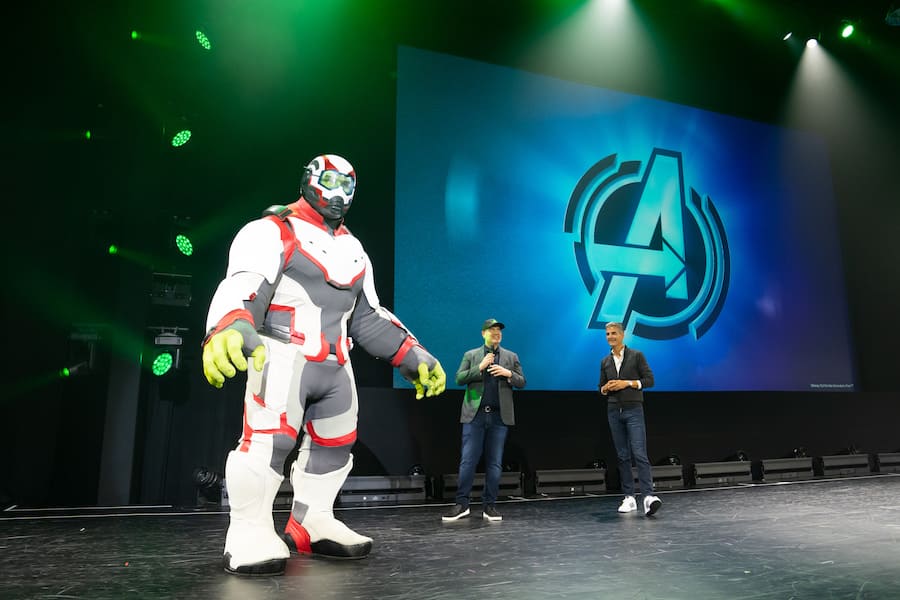A recently published Disney patent explains how the larger-than-life “Project Exo” characters work.
Project Exo Patent

Disney began teasing Project Exo in 2021. “Exo” comes from “exoskeleton,” which is what Walt Disney Imagineering created. Specifically, they created an exoskeleton that can bring to life large characters like the Hulk for guest interactions like meet and greets. Imagineering demonstrated the technology at Destination D23 in 2022 with an appearance from The Hulk. The character then appeared at Avengers Campus in Disney California Adventure for a limited time.

The patent, filed in March 2023 and published last month, is “Systems and Methods for Implementing Biological Musculature Aesthetics.” The abstract reads:
An exoskeleton to support and move a large character costume and to transfer weight of the costume away from a performer’s body. The exoskeleton includes a spine including an elongated and rigid vertical member and also includes a waist ring configured to extend about a waist of a performer using the exoskeleton in a spaced apart manner. A lower end of the spine is attached to a rear center portion of the waist ring. The exoskeleton includes a pair of leg assemblies each pivotally coupled on opposite sides of the waist ring. Each of the leg assemblies is spaced apart from a leg of the performer and extends below a foot of the performer, whereby weight is transmitted to a support surface. Each of the leg assemblies may include at least one passive assist mechanism configured to assist the performer in moving the exoskeleton with bipedal locomotion.
Project Exo Patent

In the summary, Disney describes “mesh elements” or “lattice structures,” which they use to form muscle, fat, and other “bio elements” to “achieve desired biological musculature aesthetics.” The patent includes figures representing some of these 3D-printed structures. They created a library of printable muscle networks, digital files, and fabricated pieces that can be configured in different ways. After the bio elements are all attached, character skin is placed over the figure.

Disney wrote that the exoskeleton “redirects the weight of the costume down into the ground (or other support surface) below the performer instead of into the performer’s back or shoulders” and “gives passive assist (e.g., pneumatic, elastic, and similar non-powered or motorized assist or lift) in key joint areas to aid in moving, rotating, and/or lifting appendages, which may include an outer shell extending about components of the exoskeleton as well the outer layer or skin overing such shells.”

The resulting costume provided a better experience [than traditional character costumes] for those observing a performer moving about in the costume, including seeing their favorite large characters come to life, and lin [sic] the performers using the costumes, including allowing them to give good shows or character performances including locomotion in a safer manner with increase time onstage or among visitors to a theme park, a sports stadium, or other facility.
Project Exo Patent
Read the full patent for more information.
How do you hope to see “Project Exo” used in Disney Parks? Let us know in the comments.
For the latest Disney Parks news and info, follow WDW News Today on Twitter, Facebook, and Instagram.
The post ‘Project Exo’ Patent Explains How Imagineering Created Larger-Than-Life Hulk Character appeared first on WDW News Today.

